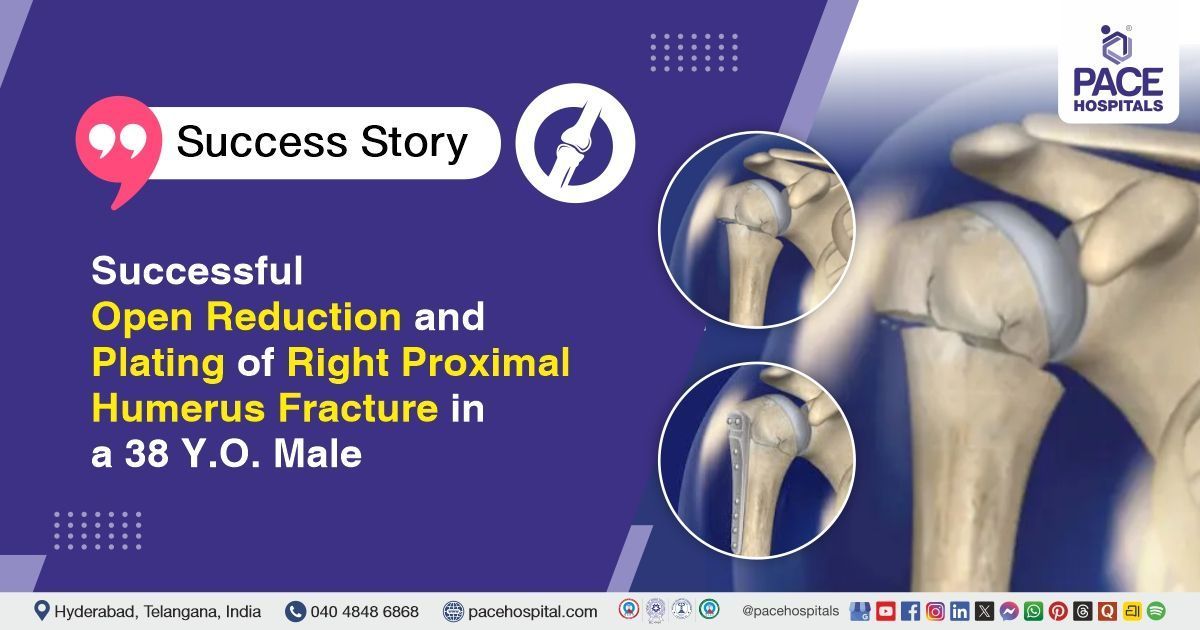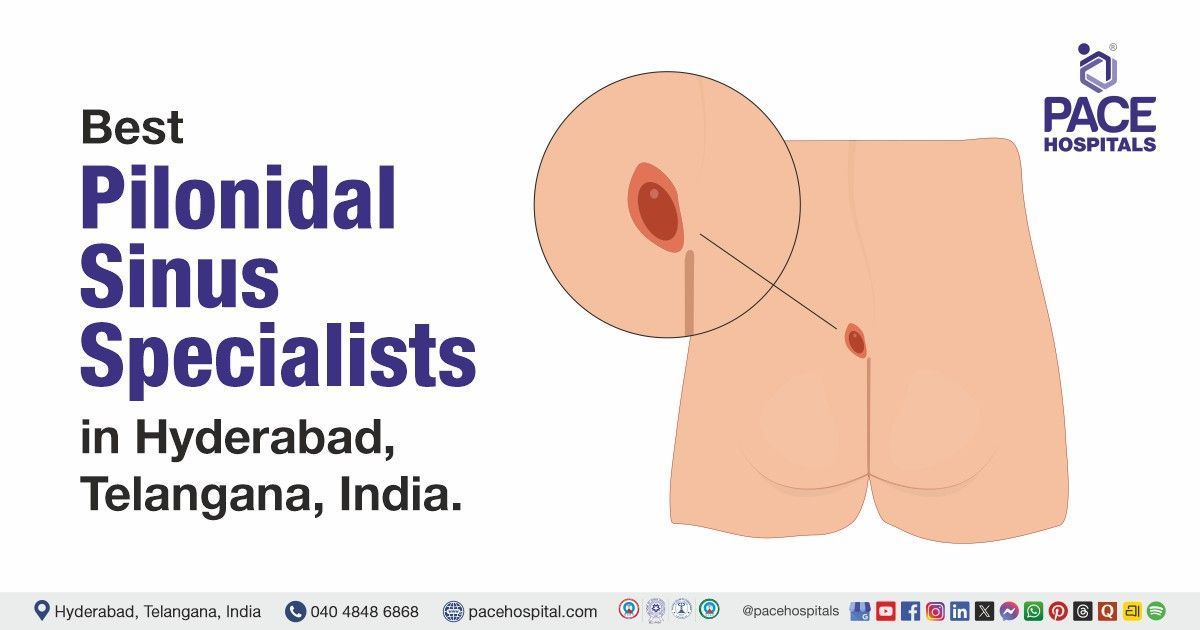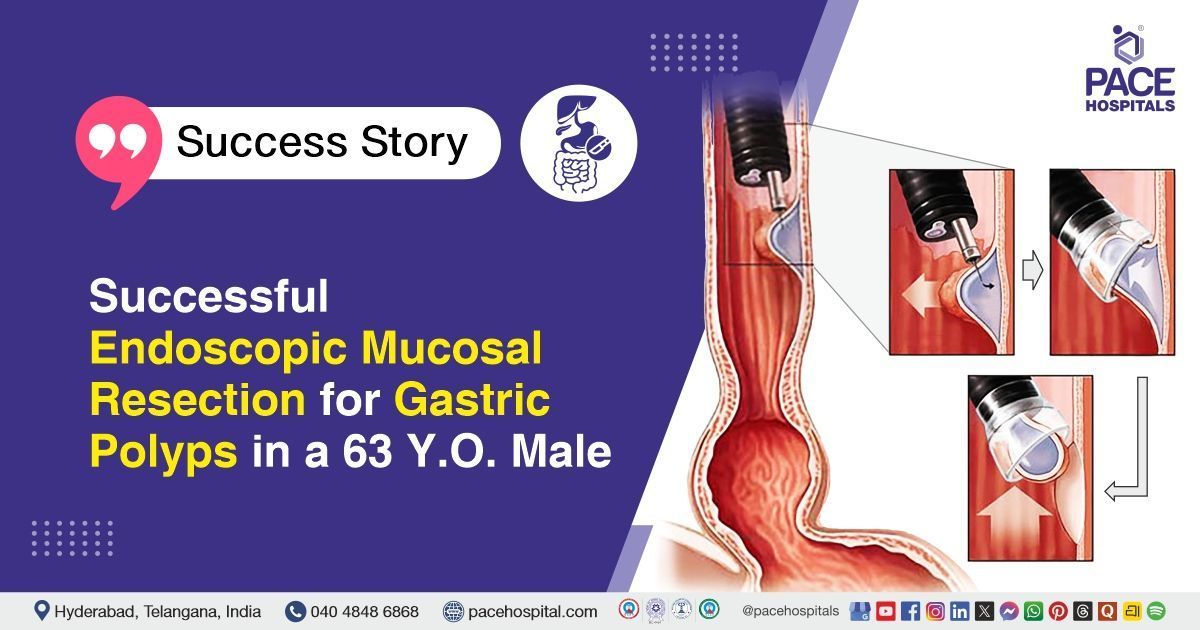Successful PTCA with IVL and IVUS Guidance for Calcified LAD Lesion in a 44-Y.O Male
PACE Hospitals
PACE Hospitals’ expert cardiology team successfully performed a
Percutaneous Transluminal Coronary Angioplasty (PTCA)
of the mid-left anterior descending (LAD) artery using Intravascular Lithotripsy (IVL) and Intravascular Ultrasound (IVUS) guidance in a 44-year-old male with severe coronary artery disease. The procedure aimed to relieve a critical arterial blockage, restore adequate myocardial blood flow, and improve cardiac function, thereby reducing the risk of further ischemic damage.
Chief Complaints
A 44-year-old male patient with a
body mass index (BMI) of 21.3 presented to the Cardiology Department at
PACE Hospitals, Hitech City, Hyderabad, with chief complaints of chest pain, associated with dizziness and episodes of syncope (fainting), prompting further evaluation.
Past Medical History
The patient is a known case of chronic liver disease (CLD – compensated, Child-Pugh Class A) with pancytopenia secondary to splenomegaly. He also has a history of type 2 diabetes mellitus, for which he is on regular medication.
On Examination
On examination, the patient was conscious, cooperative, and oriented. There was no pallor, icterus, cyanosis, or pedal edema. Vital signs were stable. Cardiovascular examination revealed normal heart sounds without murmurs. Respiratory examination showed clear bilateral breath sounds with no added sounds. The abdomen was soft and non-tender, with palpable splenomegaly but no ascites. Neurological examination was normal, with no focal deficits noted.
Diagnosis
Upon admission to PACE Hospitals, the patient was evaluated by the cardiology team, which included a detailed review of his medical history and a comprehensive clinical examination. Holter monitoring revealed non-sustained ventricular tachycardia (NSVT), prompting further cardiac evaluation.
The patient underwent a comprehensive diagnostic evaluation to assess cardiac status. Coronary angiography (CAG) confirmed Single Vessel Disease (SVD) with a 90% calcified stenosis in the mid-left anterior descending (LAD) artery. Additional imaging with intravascular ultrasound (IVUS) and intravascular lithotripsy (IVL) was used to guide intervention. Echocardiography findings indicated preserved left ventricular function.
Triphasic CT abdomen revealed chronic liver disease with portal hypertension, splenomegaly, dilated splenoportal axis, and multiple abdominal collaterals, along with pancytopenia on complete blood count.
Based on these confirmed findings, the patient was advised to undergo
Coronary Artery Disease Treatment in Hyderabad, India, under the expert care of the Cardiology Department.
Medical Decision Making
After a detailed consultation with Dr. Seshi Vardhan Janjirala, Consultant Interventional Cardiologist, and Cross- Consultations with Dr. Govind Verma Interventional Gastroenterologist and Dr. Tripti Sharma Consultant Endocrinologist, a comprehensive multidisciplinary evaluation was carried out to develop an appropriate diagnostic and therapeutic plan tailored to the patient's complex clinical condition, which included coronary artery disease (CAD), chronic liver disease (CLD – compensated), and type 2 diabetes mellitus.
Considering the patient’s symptoms of chest pain, dizziness, and syncope, along with Holter evidence of non-sustained ventricular tachycardia (NSVT) and coronary angiography findings of a 90% calcified stenosis in the mid-left anterior descending (LAD) artery, it was determined that Percutaneous Transluminal Coronary Angioplasty (PTCA) with stent placement to the left anterior descending (LAD) artery with Intravascular Lithotripsy (IVL) and Intravascular Ultrasound (IVUS) guidance was identified as the most effective intervention to restore coronary blood flow, relieve ischemic symptoms, while ensuring that hepatic and metabolic comorbidities were concurrently managed.
The patient and his family were informed about his diagnosis, the planned procedures, associated risks, and the expected benefits to preserve heart function and enhance his overall prognosis.
Surgical Procedure
Following the decision, the patient was scheduled to undergo Percutaneous Transluminal Coronary Angioplasty (PTCA) Procedure in Hyderabad at PACE Hospitals, with stent placement to the left anterior descending (LAD) with Intravascular Ultrasound (IVUS) and Intravascular Lithotripsy (IVL) guidance.
The procedure involved the following steps:
- Vascular Access and Coronary Angiography: Vascular access was obtained via the radial artery under aseptic precautions. A guiding catheter was advanced to the coronary ostium, and coronary angiography confirmed severe calcified stenosis in the mid-LAD.
- Guidewire Advancement and IVUS Assessment: A coronary guidewire was carefully navigated across the LAD lesion. IVUS was performed to evaluate the vessel diameter, plaque burden, and lesion length, which guided the stent selection and sizing strategy.
- Intravascular Lithotripsy (IVL): Due to heavy calcification, IVL was employed to fracture the calcified plaque and improve vessel compliance, enabling safer and more effective stent expansion.
- Balloon Pre-Dilation: The lesion was pre-dilated using a balloon catheter to prepare the vessel for stenting. This step helped in facilitating optimal deployment of the stent.
- Stent Deployment: A drug-eluting stent was deployed in the mid-LAD under IVUS and fluoroscopic guidance. The stent was expanded appropriately, restoring coronary lumen patency.
- Post-Deployment Imaging and Hemostasis: Final imaging with IVUS and angiography confirmed excellent stent apposition and flow restoration without complications. Hemostasis at the access site was achieved, and the patient was transferred to the cardiac care unit for post-procedure monitoring and initiation of medical therapy.
Postoperative Care
The post-procedure course was uneventful. During his hospital stay, he received intravenous fluids, dual antiplatelet therapy (DAPT), beta-blockers, proton pump inhibitors, and supportive medications to manage his underlying diabetes and chronic liver disease. He remained hemodynamically stable and showed significant improvement in symptoms. The vascular access site was clean without complications. He was subsequently prepared for discharge with comprehensive post-discharge care instructions.
Discharge Medications
Upon discharge, the patient was prescribed a dual antiplatelet regimen to prevent clot formation and a beta-blocker to regulate heart rate and reduce cardiac workload. A statin was included for cholesterol control and cardiovascular protection. To prevent gastrointestinal side effects, a proton pump inhibitor and a gastrointestinal protective agent were prescribed. Medications to support liver function and regulate bowel movements were also initiated. For diabetes management, the patient was advised a combination of oral antidiabetic agents and pre-meal insulin therapy.
Emergency Care
The patient and family were informed to contact the emergency ward at PACE Hospitals in case of any emergency or development of symptoms such as chest pain, shortness of breath, abdominal pain, or fever.
Review and Follow-up Notes
The patient was advised to return for a follow-up visit with the Cardiologist in Hyderabad at PACE Hospitals, after 1 week, with a prior appointment.
Conclusion
This case demonstrates the successful management of critical LAD disease using IVUS-guided PTCA with IVL-assisted stenting. The procedure effectively restored coronary blood flow, relieved symptoms, and the patient was discharged in stable condition with appropriate medical and follow-up care.
Comprehensive Diagnosis and Treatment by Skilled Heart Specialists
Highly experienced in diagnosing, treating, and managing a wide range of heart diseases, cardiology experts handle everything from common conditions like hypertension and arrhythmias to complex coronary artery disease requiring advanced interventions. These professionals include some of the best interventional specialists, skilled in using state-of-the-art diagnostic tools such as ECG, Echocardiography, Holter Monitoring, CT Angiography, and 3D Cath Lab imaging.
The
Cardiologist / Heart Specialist team specialises in minimally invasive treatments like angioplasty, stent placement, pacemaker implantation, and high-risk procedures such as Intravascular Ultrasound (IVUS)–guided interventions and Intravascular Lithotripsy (IVL) for calcified lesions. Whether you need preventive cardiac care, management of chronic heart conditions, or complex interventional procedures, they ensure personalised treatment, exceptional outcomes, and compassionate support throughout the journey to better heart health.
Share on
Request an appointment
Fill in the appointment form or call us instantly to book a confirmed appointment with our super specialist at 04048486868











